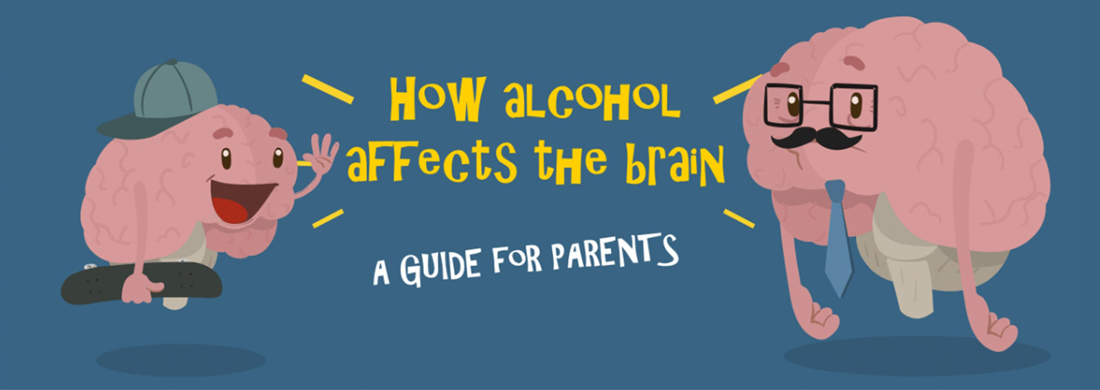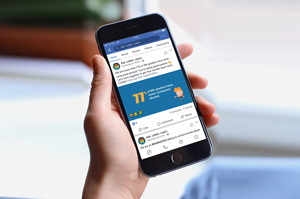
Underage drinking is on the decline in many parts of the world [1], including the United States, where lifetime alcohol consumption among eighth-grade students declined 50% between 2003 and 2016 [2]. But, there is still much more work to be done to address this issue. The Foundation for Advancing Alcohol Responsibility (Responsibility.org) launched Ask, Listen, Learn: Kids and Alcohol Don’t Mix in 2003 to help tackle underage drinking; the program encourages parents and educators to talk with children about alcohol.
Responsibility.org wanted to refresh Ask, Listen, Learn to ensure it considered the most recent research and was easily available to those who wanted to use it. So, in 2016, the organization launched additional evidence-based online resources for teachers, school counselors, nurses, other educators, and parents; these free resources tell children aged between nine and 12 years about how the developing brain works, and the dangers and consequences of underage drinking.
Since the new resources launched in 2016, Ask, Listen, Learn has created a community of over 12,000 educators and parents, and has distributed the program to over 210,000 classrooms. Also, a version of the program has run in St. Lucia, Grenada, and Dominica since 2014, and the program will launch in the Dominican Republic later this year.
Responsibility.org, alongside a team of educators specializing in elementary and middle-level education, developed Ask, Listen, Learn with the goal of increasing conversations between parents and kids about alcohol and reducing underage drinking. The program encourages open, factual conversations between parents, educators, and children about alcohol, and informs kids about the dangers of underage drinking.
The newer online resources have specific objectives that include increasing student knowledge about brain function and alcohol’s harmful effect on the developing brain.
Responsibility.org has updated Ask, Listen, Learn several times since its debut in 2003 and, in 2016, released an updated, online suite of resources. To ensure they fit today’s technology-focused educational environment, the new videos and lesson plans were developed and improved with feedback from teachers. Program content regarding the effects of alcohol on the developing brain has been reviewed by the National Institute on Alcohol Abuse and Alcoholism (NIAAA) and is consistent with currently available science.
To effectively monitor impact and progress, Responsibility.org commissions strong, independent evaluations of their programs. Ask, Listen, Learn was first evaluated in 2005, then in 2010 and 2014, with each evaluation leading to program improvements. As part of the development of new material in 2016, the organization planned to have a pilot study evaluate initial outcomes and findings of the program; this was followed by a national study, detailed below.
The updated Ask, Listen, Learn resources are available online and free of charge. The content includes animated videos, lesson plans, and interactive classroom activities; these are aligned to the National Health Education Standards (NHES), the Common Core State Standards Initiative (CCSSI), and the Next Generation Science Standards (NGSS), ensuring that the resources are matched to the curriculum used by teachers. There are also resources for parents, and games and activities.
Responsibility.org commissioned an external, independent study of the 2016 Ask, Listen, Learn material. Researchers designed a large-scale, national study to examine the impacts of the revamped, digital curriculum. The survey assessed student learning and knowledge around specific objectives and measured how interaction between students and teachers and parents had been affected.
The organization engaged 72 teachers at 70 schools, to administer anonymous surveys including a pre- and post-test evaluation, to over 1,700 students. Teachers were asked to track all the curriculum-related activities they conducted, receiving a small incentive for regularly reporting their activities and administering both the pre- and post-test surveys to their students.
Based on this data, it seems reasonable to aim the program at fifth- and sixth-grade students, understanding that some schools may use it with fourth- or seventhgraders and, less likely, eighth-grade students.
[1] International Alliance for Responsible Drinking (IARD). (2019). Working together to deliver change: How a whole-of-society approach can combat underage drinking (Trends report: Underage drinking).
[2] Johnston, L. D., O'Malley, P. M., Miech, R. A., Bachman, J. G., & Schulenberg, J. E. (2017). Monitoring the Future national survey results on drug use: 1975-2016: Overview, key findings on adolescent drug use. Institute for Social Research, The University of Michigan.
[3] Cohen, A. Y., & Ringwalt, C. (2018). Alcohol and your developing brain: Program evaluation - Executive summary. Foundation for Advancing Alcohol Responsibility (Responsibility.org).

Children aged between nine and 12 years old Parents
Educators
U.S. Department of Education
Nickelodeon
Scholastic Corporation
Centers for Disease Control and Prevention (CDC)
National Institute on Alcohol Abuse and Alcoholism (NIAAA)
Association of Middle Level Education (AMLE)
Substance Abuse and Mental Health Services Administration (SAMHSA)
American Academy of Family Physicians (AAFP)
National Latino Children’s Institution (NLCI)
National Association of Secondary School Principals (NASSP)
American School Counselor Association (ASCA)
National Association of School Nurses (NASN)
Classroom Champions
Discovery Education
Society of Health and Physical Educators (SHAPE)